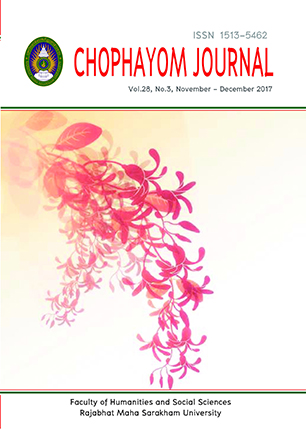タイ人日本語学習者口頭要約ストラテジー
Keywords:
Japanese Verbal Summarization Strategies, Teaching Method, Thai Learners of JapaneseAbstract
Abstract
This study examined strategies for verbal summarization utilized by Thai learners of Japanese language. 30 fourth-year students majoring in Japanese were used as subjects for testing and data collection. The students were assigned to read descriptive Japanese texts for one hour. They were allowed to use dictionary as needed. Subsequently, they are asked to summarize the story verbally in Japanese without referring to the original texts. The data was analyzed using “IU” (Idea Unit). The research finding was that the strategies most utilized by the students was exact transcription of the original text in their notes, followed by slightly changing the original text, and then by shortening the original text, and finally by simplification of the original text. Therefore, in order to improve summarization skills, teachers must ensure students are sufficiently familiar with various content structures, Summarization Strategies and Paraphrasing techniques by changing vocabulary and grammar pattern. To address oral summarization skills specifically, teachers must also ensure students practice speaking, with special attention placed on answering and formulating verbal summaries. Keywords: Japanese Verbal Summarization Strategies, Teaching Method, Thai Learners of Japanese






